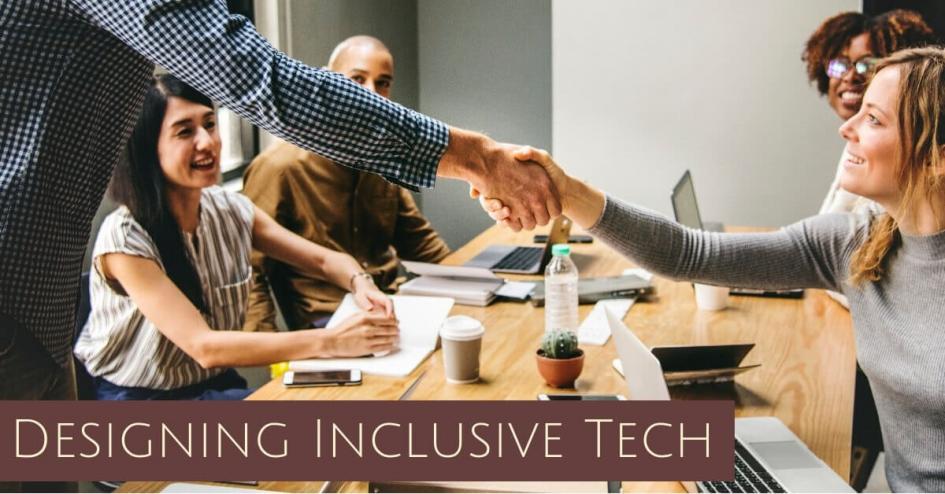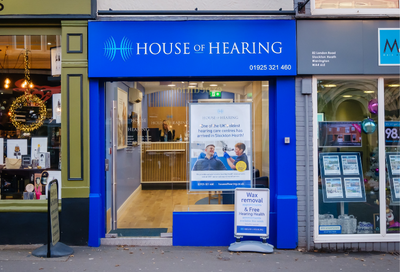
Designing Inclusive Tech
Oct 19, 2018
According to the charity Action On Hearing Loss, there are 11 million people with hearing loss across the UK, which is around one in six of us. This will expand to 1 in 5 over the next twenty years. What’s more, 70 percent of people with hearing loss who responded to their website survey said that hearing loss sometimes stopped them from doing their best at work. We can therefore say that there are definitely improvements to be made to the design of workplaces that would make them more inclusive to those who are hard of hearing.
What is inclusive design?
It’s the idea that design decisions have an impact on those who use them, and that we should be designing to account for the diversity that we encounter in the workplace, and other spaces as well. We should design our workplaces to include as many people as possible, so that they may all thrive and do their best work. This is particularly important for those with hearing loss for several reasons. Hearing loss is still a taboo subject in workplaces and the lack of recognition leads to people being less inclined to disclose their hearing loss to others. This cycle of a lack of recognition and disclosure amongst a backdrop of rising hearing loss has led us to where we are today. We need to acknowledge hearing loss and we need to make changes to workplaces to reflect this. This has a special resonance for older workers as they are more likely to suffer from hearing loss.Inclusive technology
There are many ways in which we can use technology to make offices more inclusive. The first step for those with hearing loss is to instigate a ‘text first’ policy. This will make sure communication is crystal clear and those with hearing loss will understand everything to do their job. After this, video calling is preferable to phone calls as it enables lip-reading to increase understanding. This can be extended to tannoy announcements. If you are giving an announcement over the PA system, something that might be very difficult for some people to hear, a discreet text message or email to others is an excellent way to inform inclusively. Closed captioning for important video messages is another option to explore. Here’s a common use case - that inspirational video from the CEO on your intranet at work won’t have the desired effect on the hard of hearing employees unless they have subtitles. It will also help those for whom English is not their first language. Some machines or sound sources can cause disruption to hearing aid wearers and can interfere in their face-to-face communication with others. Locate these sources of noise and ensure hard-of-hearing employees are not seated so close by, or move or remove them altogether. Classic office noise makers include wood flooring and photocopy machines. If you have a high-ceilinged office, your office might also have a lot of reverb with could make it difficult to understand conversations. If designing an office from scratch, you could find ways of reducing reverberation in the office by lowering the ceilings or installing sound dampening materials. Finally, think about safety. Make the environment safer by installing a signal device during emergencies like a flashing light. This visual cue makes it clear that there’s an emergency and people should evacuate the building. That can save the life of an employee in an emergency. And you can’t get any more inclusive than that.Non-tech ways to increase inclusivity
Remarkably, the most non-tech ways might be the most effective in increasing inclusivity. Those who are hard of hearing can be bothered by loud noises when they are wearing hearing aids, as they are not always able to separate the sound they want to hear from surrounding background noise. It is important therefore to offer more ideal spots for mitigating the noise. Allowing them to sit with their back against a wall or in the corner would be best to mitigate background noise. Ensure that this seat is not facing a large window, as backlit faces can obscure and make it more difficult to lip-read should the employee need to do so. Strategic seat placement is also important during meetings. It’s helpful for employees with hearing loss to sit as close to the speaker (or the conference call speaker) as possible. That way, lip reading is less of a challenge, and it has the added bonus of making the employee look like the most eager beaver on the team!Visit Us at House of Hearing
Treating hearing loss brings significant improvements to your performance on the job. Visit us at House of Hearing for a hearing exam and consultation.Our Clinics
All House of Hearing clinics are in town centre locations and accessible to public transport and parking. Home visits also available if mobility is an issue.


.png)
.png)
.png)

.png)
